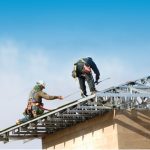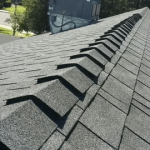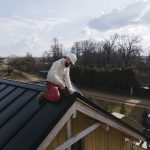Introduction
Hawaii’s beautiful landscapes and tropical climate come with a cost—unpredictable weather, heavy rainfall, salt-laden air, and hurricane threats. For homeowners across the islands, this means one thing: your roof is always on the front lines. Roof leak inspection is no longer a luxury—it’s a necessity. Whether you’re a property owner in Maui or managing rentals in Honolulu, understanding how to prevent roof leaks is key to preserving your home’s value and safety.
In 2025, with an uptick in erratic weather patterns due to climate change, timely roof inspections have become even more important. This blog explores the role of roof leak inspections in safeguarding your home, with a special focus on the challenges unique to Hawaii’s climate.
Why Roof Leak Inspection is Crucial in Hawaii
Hawaii’s environment accelerates roof wear faster than in most mainland states. Here’s why regular roof leak inspection is essential:
- Heavy Rainfall: Sudden downpours test the limits of your roofing material.
- Humidity and Mold: Trapped moisture leads to mold and rot.
- Salt in the Air: Coastal homes experience accelerated corrosion of roofing fasteners and flashing.
- Hurricanes and Windstorms: One lifted shingle can lead to massive water damage.
By catching issues early through inspections, homeowners can save thousands in repairs and prolong the life of their roofs.
How Often Should You Inspect Your Roof in Hawaii?
The Hawaii Roofing Contractors Association recommends twice-a-year inspections—once before the wet season and once after. However, if you’ve experienced any of the following, schedule an immediate inspection:
- Recent heavy storm or hurricane
- Signs of water stains on ceilings
- Sagging or warping in roofing materials
- Roof over 10 years old and never inspected
Roof Leak Inspection: What Experts Look For
A professional roof leak inspection includes more than just a visual once-over. Trained roofing specialists examine:
1. Shingle Damage and Granule Loss
Asphalt shingles wear faster in Hawaii’s sun and rain. Missing or curling shingles are a red flag.
2. Flashing and Sealant Integrity
Flashing around chimneys, skylights, and vents often becomes the entry point for leaks.
3. Roof Valleys and Drainage Flow
Water naturally flows into roof valleys. If not sealed correctly, they become hotspots for leaks.
4. Gutters and Downspouts
Blocked gutters cause water to back up under the shingles, especially during a Hawaiian storm.
5. Roof Penetrations and Solar Panels
With the rise of solar energy in Hawaii, penetrations through the roof can introduce vulnerabilities if not sealed properly.
Roof Leak Inspection: Protecting Your Roof from Long-Term Climate Stress
Even if you don’t see visible damage, small cracks, lifted nails, or minor blistering in materials can lead to major problems if ignored. This is why roof maintenance in Hawaii must be proactive.
A trusted local provider like Fresh Roof Maui uses eco-safe cleaning, rejuvenation treatments, and detailed digital reports to ensure transparency and action. Many homeowners also opt for roof rejuvenation instead of full replacement, which has become a trending service in 2025.
Climate-Specific Roofing Materials for Hawaii
If your roof fails inspection, material choice plays a big role in long-term protection. In Hawaii, the following materials are commonly used:
- Asphalt Shingles: Affordable and effective, but needs maintenance every 5–7 years in tropical climates.
- Metal Roofing: Highly durable and salt-resistant but expensive upfront.
- Tile Roofing: Great for rain and wind but heavy—requires a strong structure.
After a roof leak inspection, your roofing contractor in Hawaii may recommend switching to a material more suited to your microclimate—windward versus leeward locations have different needs.
How to Prepare for a Roof Leak Inspection
Here’s what to do before your inspection:
- Clear debris from roof and gutters
- Document existing interior leaks with photos
- Ensure attic access is available
- Check solar panel connections for signs of water ingress
Being prepared helps your roofing contractor provide a more accurate diagnosis and quote.
The Role of Technology in Roof Leak Inspections
Roofers today are using drone footage, thermal imaging, and AI-assisted damage detection to catch problems earlier than ever. For Hawaii, where humidity and saltwater can cause subtle hidden damage, this tech has become an invaluable tool.
At Fresh Roof Maui, thermal scans detect moisture under shingles, and roof condition reports are delivered digitally with photos and recommendations.
Preventing Roof Leaks in 2025 and Beyond
Here are a few proactive steps for roof damage prevention in Hawaii’s climate:
- Trim overhanging trees that drop debris
- Install high-quality underlayment and flashing
- Get your roof treated with a protective sealant
- Replace damaged shingles immediately after a storm
- Enroll in an annual roof care program
These steps don’t just prevent leaks—they extend the life of your entire roofing system.
Frequently Asked Questions (FAQs)
Q1: How much does a roof leak inspection cost in Hawaii?
Prices range from $150 to $400, depending on roof size and tools used (e.g., drone or infrared cameras).
Q2: Can I inspect my own roof?
While you can check for visible damage, only a professional has the tools and training to catch hidden issues—especially those caused by Hawaii’s climate.
Q3: What is the difference between a roof inspection and a roof assessment?
A roof inspection identifies immediate repair needs, while a roof assessment includes long-term condition evaluation and replacement planning.
Q4: Does homeowners insurance cover roof leaks?
Only if the leak is caused by a sudden event like a storm. Pre-existing damage or neglect is not covered.
Q5: How soon should I repair a minor leak?
Immediately. Small leaks can lead to mold, insulation damage, and electrical hazards within days in Hawaii’s humid climate.
Final Thoughts
Roof leak inspections are your first defense against Hawaii’s intense and unpredictable climate. With salt air, sudden rains, and hurricane seasons all taking a toll, homeowners need to think preventively—not reactively. Whether you’re safeguarding a home in Kihei or managing rental properties in Lahaina, scheduling routine inspections is a smart investment.
Trust a reputable local expert like Fresh Roof Maui to provide honest assessments and modern solutions—because protecting your roof means protecting your entire home.








